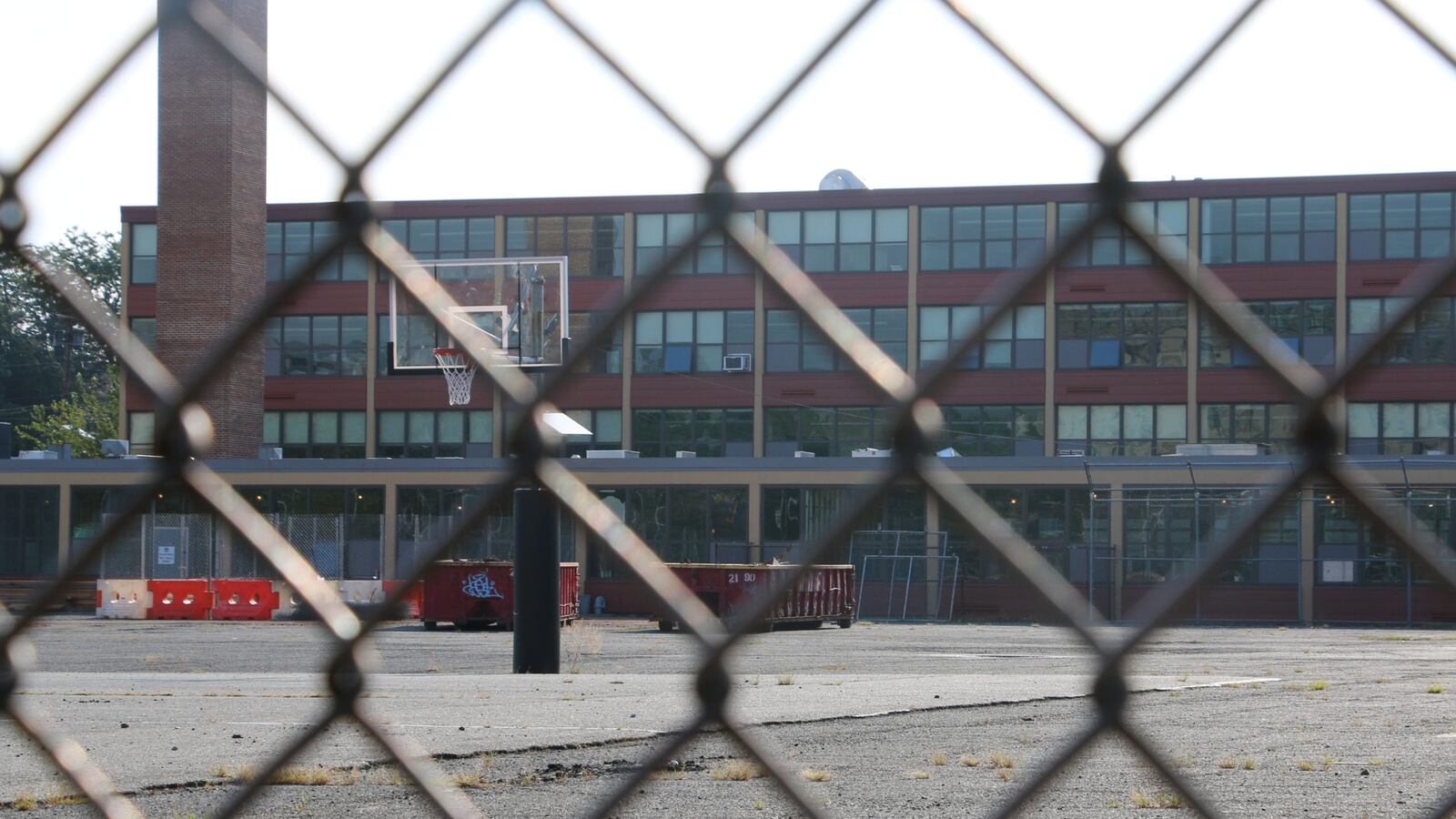Because the state is unlikely to cough up money to replace Newark’s aging school buildings, officials say the district is moving forward with urgent repairs — everything from paint jobs and roof replacements to new fire alarm systems and elevators.
The renovations come after the state denied the bulk of Newark’s request for emergency funding and the state agency responsible for replacing schools in high-poverty districts is nearly broke. That has left Newark essentially on its own to make repairs that officials say should have been completed years ago, when the state controlled the Newark school system.
“What we found was a lot of deferred maintenance over the past few years in which we did not have the resources to do a lot of this work,” said Steve Morlino, whom the district hired last year as executive director of facilities management.
Now the district is making up for lost time, Morlino told the school board at a recent meeting. A number of projects are underway, with another $35 million in repairs planned for later this year and next. Here are some of the planned projects:
- Fire alarms: $18.7 million. The district will install new fire alarm systems at 19 schools. Some existing systems are so old that their parts could not be replaced, Morlino said. All schools also will be outfitted with fire alarm monitoring systems.
- Elevators: $9 million. Elevators at 14 schools will be upgraded or replaced. All four elevators at East Side High School are out of service. “It’s an emergency,” Morlino said.
- Emergency generators: $4.7 million. Nineteen schools will get new generators, which ensure that fire alarms, emergency lighting, and heaters keep working during a power outage. Generators at three of the schools date back to the 1960s and are out of service.
- Building repairs: $2.7 million. The work will include fixing leaky building roofs; installing new floors and ceilings in classrooms; renovating restrooms; installing classroom air conditioners; and repainting classrooms, auditoriums, and stairwells.
- Carbon dioxide detectors: $50,000. The district has already installed additional monitoring devices, which are required by law, in 36 buildings. It has ordered another 1,000 devices that will be installed in 31 additional buildings. Every school has a minimum of five detectors, Morlino said.
Some of the projects involve buildings that will house new or revamped schools. For instance, work is underway at the future homes of Sir Isaac Newton Elementary School and the Newark School of Global Studies, two school slated to open in September.
Newark Vocational High School was scheduled to reopen last fall in a renovated building with state-of-the-art facilities where students would be trained in printing, hospitality, and culinary arts. Instead, the district was unable to complete the renovations at 301 West Kinney by the time classes started, forcing the school to relocate to a temporary site.
Midway through the year, the district still must make major repairs to the schools, including a planned $1.2 million roof replacement and another $1.2 million in scheduled fixes involving carpentry, plumbing, painting, and electrical work, according to district documents. Students remain at the temporary site.
“Some of the students are ready to leave,” said Douglas Freeman, a member of the school’s parent council. “They feel they’ve been duped.”
Under a court order, the state Schools Development Authority is obligated to fully fund the renovation and construction of schools in 31 high-poverty districts, including Newark. The agency has paid for many Newark projects in the past. But the agency, which has been beset by charges of corruption and waste, is now nearly out of money and no longer adding new buildings to its construction list.
“The SDA doesn’t have any more funds left,” said Valerie Wilson, the district’s school business administrator, at a board meeting this month. “We as a district will die on the vine waiting for that money — our buildings are structurally collapsing.”
Instead, the district is paying for many of the repairs by tapping its operating budget, the general pool of money used to fund everything from teacher salaries and textbooks to buses and computers. That approach spares the district from having to borrow money, but it also diverts funds from classrooms.
The district has also taken advantage of a state program that allows districts to finance repairs through anticipated energy reductions. The district already paid for several roof replacements by installing solar panels that will cut down on electricity costs, and it expects to finance another $100 million in capital improvements at 60 schools through that energy-saving program, Morlino said.
Still, the planned fixes only scratch the surface of what’s needed. The average Newark school building is more than 80 years old, with some erected as far back as the mid-1800s. Eventually, many of the buildings will need to be replaced.
With the state unlikely to send money for new buildings anytime soon, Wilson said the district is exploring alternative ways to pay for construction. One possibility is city-issued bonds, effectively loans the city takes out to cover expenses. If the district were to issue its own bonds, which is a type of debt that must be repaid, voters would likely have to approve the measure.
“We’re going to need a significant amount of money,” Wilson said. “If we have the money, we have the ability to do the work — but the funding is what is critical.”
We want to hear from you. Please take this quick survey to let us know about the condition of your school building.


